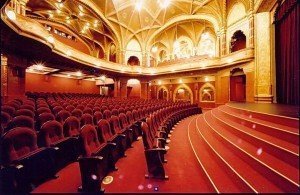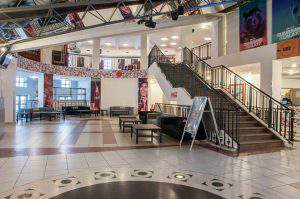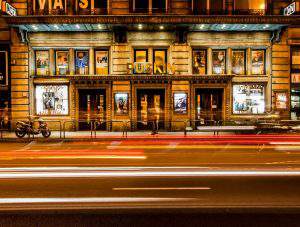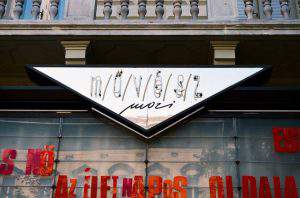Budapest Uncovered: Movie Theatres

The holiday movie season is upon us: although this winter we’ll have to do without a new Star Wars film (we’ll let you decide if that’s a good or a bad thing), luckily there will be no shortage of Oscar baits and studio tentpoles. And what better place to get lost in the glitz and glamour of Hollywood than in Budapest’s most prestigious motion picture palaces?
This collection is brought to you by Funzine.
Uránia National Film Theatre
1088 Budapest, Rákóczi út 21.
Opened first as an orpheum in 1895 on the lower two floors of a four-storey apartment building, it wasn’t until 1917 that Uránia was officially designated as a cinema. However, its history as a venue screening moving pictures dates all the way back to 1899, making it Hungary’s oldest continuously existing film theatre.

Designed by German-born Hungarian architect Henrick Schmal (a student of Miklós Ybl, and the architect behind several other iconic buildings in the city such as the eclectic Párisi Udvar), the building’s architecture mixes elements from the Moorish, Venetian Gothic, and Renaissance styles, resulting in an oriental monument unlike any other in Budapest.
It was on the rooftop terrace of Uránia where the first independently produced Hungarian movie, titled Dance, was shot in 1901, to illustrate one of the lectures of the Uránia Scientific Theatre through 23 episodes from the history of dance, making it the birthplace of Magyar movie-making.
Unfortunately, the film was destroyed in a fire soon after it was made, and all we have left is a couple of still images. Regularly named as one of the most beautiful movie theatres in the world thanks to its ubiquitous ornamental decoration, the elegant, dimly-lit, gilded cinema hall of Uránia (capable of seating 412 people) looks as though it would be better suited for marathon-length operas than 90-minute screen projections. Apart from movies, you can also catch a concert or a ballet play at Uránia rather frequently, or enjoy turn-of-the-century opulence sitting at one of the wooden tables of the first floor café anytime you feel like. The prestigious University of Theatre and Film Arts is also housed in the building located halfway between Blaha Lujza tér and Astoria.
Corvin Film Palace
1082 Budapest, Corvin köz 1.
Built in place of a former distillation plant and public bath, the Corvin Film Palace is a 1,200 seater historic cinema, designed by Emil Bauer, and handed over to the public in 1922 as the most modern film theatre of its time. Unlike most other institutions in the movie-showing business, Corvin never changed its name during its 96 years long run. In fact, the whole neighbourhood was named after the yellow-coloured Art Deco building. In 1957 Corvin became the country’s first cinema showing films in cinemascope aspect ratio, and since its 1996 overhaul it’s the only multiplex cinema in Budapest operating in its own, independent building.

Puskin Cinema
1053 Budapest, Kossuth Lajos utca 18.
Situated on busy Kossuth Lajos utca, Puskin Cinema (originally named Fórum) was once the most luxurious movie theatre in Budapest, and its ornate, antique-Art Deco interiors are still sights to see. Built by architects Béla Jánszky and Tibor Szivessy, Puskin was opened in 1926; three years later, it was the first cinema in Hungary to screen sound films (or “talkies”), as it had hands-down the best acoustics out of every then-existing kino-house. Although for the first couple of decades of its existence Puskin only housed one giant screening hall, movie-goers can now enjoy independent and art films in five rooms, named after cult-classic movies Metropolis, Amarcord, Körhinta, Annie Hall, and Mephisto.

Művész Cinema
1066 Budapest, Teréz körút 30.
Just a stone’s throw away from Oktogon, you’ll find the movie marquee of Művész Cinema, advertising the films (equal parts mainstream, equal parts arthouse pieces) played that week in a style that’s reminiscent of the cinemas of 1980s America. The first movie screening took place here in 1909, taking the venue over from a bankrupt night club called Bonbonniére, inside a hall that seated 594 persons. Today, as the last survivor of the once numerous cinema network of Terézváros, Művész houses a huge rental collection, as well as five different screening halls named after famous directors, presenting the latest movie premieres.

Featured image: www.facebook.com/MűvészArtMozi
Source: https://funzine.hu/en/





